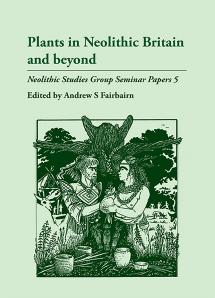

Most ebook files are in PDF format, so you can easily read them using various software such as Foxit Reader or directly on the Google Chrome browser.
Some ebook files are released by publishers in other formats such as .awz, .mobi, .epub, .fb2, etc. You may need to install specific software to read these formats on mobile/PC, such as Calibre.
Please read the tutorial at this link: https://ebookbell.com/faq
We offer FREE conversion to the popular formats you request; however, this may take some time. Therefore, right after payment, please email us, and we will try to provide the service as quickly as possible.
For some exceptional file formats or broken links (if any), please refrain from opening any disputes. Instead, email us first, and we will try to assist within a maximum of 6 hours.
EbookBell Team

4.1
70 reviewsPlant-centred issues are fundamental in the definitions and explanations of the Neolithic as a phenomenon.The meeting of the Neolithic Studies Group from which this volume developed aimed to provide a forum for the wide range of approaches now applied to Neolithic archaeobotany at site and landscape scales of resolution.
Table of Contents:
Bringing plants into the taskscape (A. Whittle)
High resolution maping of landscapes and landuse (M. J. Allen)
Coleopteran evidence for the elm decline (M. Robinson)
Plant rescources on a crannog (C. Warsop)
Floodplain vegetation history (A. G. Brown)
Woodland, trees and people in southern Britain (P. Austin)
The importance of cultivation and collecting in Britain (G. Jones)
Charred cereals, fruits and nuts (M. Robinson)
Wheat crops of Britain (F. McLaren)
Neolithization of the Netherlands (C. Bakels)
Spread of plant crops across Britain (A. Fairbairn)
Human consumption of plant foods in the British Neolithic (M. P. Richards)
Neolithic ale (M. Dineley & G. Dineley)
Plant as the raw material for crafts (L. Hurcombe)
Reconstructing archaeobotany (J. Swogger)
Originally published in 2000.